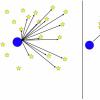Hi... agree... thank you to Kentavr for uncovering this issue with stearic acid. Too bad it makes this protocol a bit more complicated. I haven't started it yet, but purchased the Duda brand a few months ago. Not sure yet where to go from here re stearic. Seems like the jury is still out...

Manipulating mitochondrial dynamics
#1111
Posted 21 August 2018 - 05:27 PM
#1112
Posted 21 August 2018 - 05:58 PM
I posted this previously--
You're right Turnbuckle, as expected palmitate causes mito fission and therefore mixing it with stearic acid is not a good idea.
https://www.ncbi.nlm...ubmed/28753206/
#1113
Posted 21 August 2018 - 07:04 PM
I think we should not worry about this.
I 've reread the recent paper in Nature carefully again and its stated clearly that immediate C16 intake influence neither C16 levels in the blood nor the fusion state.
 C16 graph.png 187.32KB
2 downloads
C16 graph.png 187.32KB
2 downloads
This figure is not shown in the article itself, its in a supplemental material pdf so I cut it out. Authors rationalize it by stating that C16 levels in the blood are buffered and controlled. It doesn't go up after a C16 meal and even doesn't fall after 2 days low-fat diet.
Unlike the C18:0 drink, the C16:0 drink did not induce mitochondrial fusion (Supplementary Fig. 6b). C16:0 ingestion also did not increase C16:0-TAG levels in blood (Supplementary Fig. 6c). This suggests that serum C16:0-TAG levels are more buffered than C18:0-TAG levels, in agreement with the fact that C16:0-TAG levels also do not drop after 2 days of a low-fat diet (Fig. 2d).
in this light, I am not even sure that C16 intake is a factor at all in its blood levels or is it just a function of a liver function (just like blood sugar levels). Need to look further into this topic.
So...C16 is irrelevant in this setting, we could move on)
#1114
Posted 21 August 2018 - 07:47 PM
#1115
Posted 21 August 2018 - 08:07 PM
Good find Kentavr.
All of the various alternatives to 'impure' stearic acid - Shea butter, Sal Butter, Kokum butter and Mango Butter - are mainly composed of Stearic Acid and Oleic Acid with small amounts of Palmitic Acid.
I've managed to find food grade Mango Butter on Amazon so I'll probably go with that.
Has anyone found anything about the effects of Oleic Acid on mitochondria? So far it seems to be neutral as far as I can tell, but I've only skimmed the following paper:
https://www.nature.c...les/ncomms15832
The alternative, going through Fisher Scientific to get 97% Stearic Acid, is possible - you just need to register for a PO Box (in the UK).
Hey so do you have a link to what you found on Amazon?
Oleic Acid is a monounsaturated fat which is good for you, especially for myelination. It's found in abundance in walnuts and other tree nuts. Lowers LDL and increases HDL.
Edited by Nate-2004, 21 August 2018 - 08:09 PM.
#1116
Posted 21 August 2018 - 08:25 PM
I found this mango butter : https://www.amazon.c...o+butter&th=1. But it doesn't say anything about ingesting it.
#1117
Posted 21 August 2018 - 08:45 PM
Turnbuckle, what brand of stearic acid do you use in your protocol?
I used stearic acid from Spectrum Chemical. The bottle doesn't give the purity and their website doesn't have the COA as I bought it 15 years ago. I've written to them asking about it. The SDS gives a stearic acid range of 40-60% with a present price of $100/500g. They have another version where the SDS says it's 100% stearic acid, and that's listed at $313/500 g. Recently I bought several bottles of what is claimed to be 99% purity from a small distributor selling through Amazon--Eisen-Golden Laboratories. I've already made brownies from it but haven't tried them yet. They seem a bit sticker than before, so I wonder about the purity. There are Chinese companies selling stearic acid at 99% purity for around $1000 per ton, so by "purity" they must mean something else.
Edited by Turnbuckle, 21 August 2018 - 08:52 PM.
#1118
Posted 21 August 2018 - 09:04 PM
I found this mango butter : https://www.amazon.c...o butter&th=1. But it doesn't say anything about ingesting it.
It says "For external use only" on the label.
Edited by RWhigham, 21 August 2018 - 09:08 PM.
#1119
Posted 21 August 2018 - 09:11 PM
Hey so do you have a link to what you found on Amazon?
Oleic Acid is a monounsaturated fat which is good for you, especially for myelination. It's found in abundance in walnuts and other tree nuts. Lowers LDL and increases HDL.
Stearic acid metabolizes to oleic anyway, so all in all mango butter looks healthier and better for this protocol than what is being sold as stearic acid. And because it melts at body temp, one could eat or drink it without bothering to cook it into anything.
Edited by Turnbuckle, 21 August 2018 - 09:20 PM.
#1120
Posted 21 August 2018 - 09:21 PM
According to this news, you can eat mango oil, and even want to use it as a substitute for cocoa butter in the production of chocolate:
https://www.shape.co...-fewer-calories
The Study:
https://www.nature.c...les/srep32050#/
So you can eat it. ![]()
Edited by Kentavr, 21 August 2018 - 09:29 PM.
#1121
Posted 21 August 2018 - 09:24 PM
Zatural is selling a mango butter which it advertises as 'food grade.' "PLUS TASTE (sic) DELICIOUS IN YOUR FAVORITE RECIPE!"
https://zatural.com/...ic-mango-butter
Edited by rarefried, 21 August 2018 - 09:25 PM.
#1122
Posted 22 August 2018 - 12:12 AM
Has anyone found anything about the effects of Oleic Acid on mitochondria?
great question, haven't found much
however! I did find this study which shows Linoleic acid increased mitochondrial biogenesis
Linoleic Acid Promotes Mitochondrial Biogenesis and Maintains Mitochondrial Structure for Prevention of Streptozotocin Damage in RIN-m5F Cells
Received September 30, 2008; Accepted February 28, 2009; Online Publication, June 7, 2009 doi:10.1271/bbb.80684
Linoleic acid (LA) improves insulin resistance and prevents diabetes. To investigate whether linoleic acid could protect against streptozotocin (STZ)-induced cell death, rat RIN-m5F cells were exposed to STZ. SL and SO groups consisted of cells treated with STZ and then LA or oleic acid (OA) respectively. STZ treatment decreased the mitochondrial membrane potential in the STZ, SO, and SL groups. Cells of the SL group had more intact mitochondria. Increased mRNA expression of mitochondrial DNA (mtDNA) and nuclear DNA (nDNA), as well as of the mitochondrial biogenesis regulators peroxisome proliferator activated receptor coactivator-1 (PGC-1), and mitochondrial transcription factor A (Tfam), were found in the LA group. The insulin content was significantly decreased in all three groups. These results suggest that the effects of LA on cell viability after STZ damage occur through maintenance of mitochondrial structure and increased mitochondrial biogenesis.
Edited by Phoebus, 22 August 2018 - 12:50 AM.
#1123
Posted 22 August 2018 - 12:48 AM
#1124
Posted 22 August 2018 - 01:44 AM
So the only "bad" review was that the dude's order measured 14.5 oz instead of 16. I mean, if that's true, that's not terrible. I doubt I would use the whole 14 oz in a month. That's 448g and I only need roughly no more than 20g at a time to make about 10g of stearic for the protocol.
I'll take one for the team and test it out Friday when my fast ends. I don't know how it will taste in brownies, but I plan to put it in my broccoli based smoothie that I heat up to 60 celsius for max sulforaphane output. It might even cover up the awful taste of broccoli.
Edited by Nate-2004, 22 August 2018 - 01:46 AM.
#1125
Posted 22 August 2018 - 05:13 AM
I don't believe this product is pure oil due to the following statement under the product description half way down the page:
There are 102 calories in a tablespoon of butter. There are only 35 calories in a tablespoon of mango butter. The taste of each is very similar. With mango butter only containing a mere 35% of the calories than butter has, it stands to be an excellent substitute when cooking.
Although this product is food grade apparently due to being "refined". All the non-food grade products sold for cosmetic purposes are raw and sold for external use only and since all mango oil comes from third world countries and is processed under dubious sanitary conditions, I would not encourage consumption unless willing to risk an intestinal infection (just like I don't drink the water while traveling in third world countries and am careful where I eat). Proceed carefully at your own risk.
#1126
Posted 22 August 2018 - 06:27 AM
Hebbeh, what is it about the quote in your post #1125 that suggests to you that the mango butter isn't pure oil?
#1127
Posted 22 August 2018 - 08:12 AM
Hey so do you have a link to what you found on Amazon?
Oleic Acid is a monounsaturated fat which is good for you, especially for myelination. It's found in abundance in walnuts and other tree nuts. Lowers LDL and increases HDL.
This is what I found on the UK Amazon site. Claims to be food grade and can be used in baking and cooking, but is unrefined.
https://www.amazon.c...ood Grade, 100g
#1128
Posted 22 August 2018 - 12:51 PM
Hebbeh, what is it about the quote in your post #1125 that suggests to you that the mango butter isn't pure oil?
There are 102 calories in a tablespoon of butter. There are only 35 calories in a tablespoon of mango butter. The taste of each is very similar. With mango butter only containing a mere 35% of the calories than butter has, it stands to be an excellent substitute when cooking.
Fat is 9 cal per gram amd if the mango butter was pure fat, it would have the same cal as butter. Hence, it is at best, half fat and half something else.
Edited by Hebbeh, 22 August 2018 - 12:56 PM.
#1129
Posted 22 August 2018 - 01:24 PM
This is what I found on the UK Amazon site. Claims to be food grade and can be used in baking and cooking, but is unrefined.
Not sure if unrefined is food grade but this is UK anyway, I'm in the U.S. so all we have is that other one for now. I can check on local stores like Trader Joe's or Whole Foods to see what they have for Mango Butter.
#1130
Posted 22 August 2018 - 01:31 PM
Pentadesma butyracea butter
Palmitic acid (C16:0) : 4 - 6
Stearic acid (C18:0) 40-45
Oleic acid (C18:1) 45-50
Linoleic (C18:2) 1-2
Shorea Robusta butter
(C16:0) 4 - 8
(C18:0) 40-50
(C20:0) 5-8
(C18:1) 35-45
(C18:2) 1-4
Butyrospermum parkii butter
(C16:0) 4 - 6
(C18:0) 40-43
(C18:1) 45-50
(C18:2) 6-8
(C20:0) 1-3
Edited by Moumou, 22 August 2018 - 01:36 PM.
#1131
Posted 22 August 2018 - 01:42 PM
Back to dynamics and quality control I found this article posted today. Turnbuckle, do you think this further affirms what we're doing?
https://www.salk.edu...s-you-stronger/
Edited by Nate-2004, 22 August 2018 - 01:42 PM.
#1132
Posted 22 August 2018 - 01:42 PM
Fat is 9 cal per gram amd if the mango butter was pure fat, it would have the same cal as butter. Hence, it is at best, half fat and half something else.
35 kcal/9 = approx 4 g of fat per tablespoon (or less if it includes some protein, & carbohydrate). Salted butter is not quite pure fat, it's 14 g / tbsp and only 100 kcal / tbsp, of which 99.8 kcal (11 g) is from fat ref
Edited by RWhigham, 22 August 2018 - 02:15 PM.
#1133
Posted 22 August 2018 - 02:19 PM
Back to dynamics and quality control I found this article posted today. Turnbuckle, do you think this further affirms what we're doing?
Sort of. With fission the deficiencies of mtDNA loops are exposed, allowing them to be destroyed. So fission that temporarily makes cells weaker--insofar as producing less ATP makes them weaker--ultimately improves mitochondria and makes cells stronger. This is not what's put forward in the article, however, which is mitohormesis. This occurs with nDNA, not mtDNA--
These results demonstrate the existence of conserved mitochondria-to-nucleus stress-signaling pathways that regulate aging through epigenetic modulation of nuclear gene expression.
https://www.ncbi.nlm...les/PMC4036400/
I wouldn't expect much of that from a fission/fusion protocol where the benefit comes from eliminating defective mtDNA.
#1134
Posted 22 August 2018 - 02:38 PM
From my search yesterday it looks like its a common practice to label C16+C18 mix as a stearic acid. At least all food grade sources I 've seen are like this.
BTW Hystrene 5016 NF-EXT is the same mix, only for external use
Apparently you're correct. I apologize for my error earlier. Both PMC products, i.e. 5016 NF-FG and 5016 NF-EXT, are about half palmitic acid.
It annoys me that so many Amzn products labeled stearic acid triple pressed are essentially grossly mislabeled. A lot of people could continue to end up being harmed. I have notified the FDA rep in my state, but I doubt they'll take any action.
Edited by Climactic, 22 August 2018 - 02:42 PM.
#1135
Posted 22 August 2018 - 02:48 PM
Intermittent living; the use of ancient challenges as a vaccine against the deleterious effects of modern life A hypothesis (2018)
> a vitamin C intake above 650 mg (1000 mg) affects mitochondrial metabolism and mitohormesis negatively as evidenced in various human studies
After reading the above, I dropped my daily vitamin C supplement dose to just 250 mg twice a day. That's a total of 500 mg per day which is somewhat below the 650 mg threshold they mention.
Edited by Climactic, 22 August 2018 - 02:50 PM.
#1136
Posted 22 August 2018 - 04:29 PM
#1137
Posted 22 August 2018 - 05:06 PM
→ source (external link)Intermittent living; the use of ancient challenges as a vaccine against the deleterious effects of modern life A hypothesis (2018)
> a vitamin C intake above 650 mg (1000 mg) affects mitochondrial metabolism and mitohormesis negatively as evidenced in various human studies
After reading the above, I dropped my daily vitamin C supplement dose to just 250 mg twice a day. That's a total of 500 mg per day which is somewhat below the 650 mg threshold they mention.
I only take it a couple of times every week or two with the stem cell protocol, it's 1000mg but I don't think that's going to matter much in intermittent doses like that.
#1138
Posted 22 August 2018 - 05:35 PM
→ source (external link)
Intermittent living; the use of ancient challenges as a vaccine against the deleterious effects of modern life A hypothesis (2018)
> a vitamin C intake above 650 mg (1000 mg) affects mitochondrial metabolism and mitohormesis negatively as evidenced in various human studies
After reading the above, I dropped my daily vitamin C supplement dose to just 250 mg twice a day. That's a total of 500 mg per day which is somewhat below the 650 mg threshold they mention.
I've never been very convinced by any of those Vitamin C cancels the effects of exercise studies. It all depends on the level of stress. Nrf2 can make you stronger, but many train above the level of hormesis.
Plus if we talk stem cells for a minute, nrf2 stimulates diffentiation through asymmetric division (due to higher ROS signaling damage), whereas Vitamin C lowers ROS and stress making symmetrical division and maintenance of the stem cell pool more likely (there is loads on pubmed about the benefits to stem cells from Vit C). So with stress Vs antioxidants, it's all about how you use them.
Personally I've seen greater benefits from high dose Vit C then I ever did from nrf2 activators, or exercise alone.
Edited by QuestforLife, 22 August 2018 - 05:36 PM.
#1139
Posted 22 August 2018 - 06:30 PM
Fat is 9 cal per gram amd if the mango butter was pure fat, it would have the same cal as butter. Hence, it is at best, half fat and half something else.
Apparently moisture content is higher for mango butter than for other butters, but agreed, that calorie count is suspiciously low.
ref. https://www.ncbi.nlm...les/PMC4995435/
I queried Zatural with reference to this info, also inquiring about quality control with respect to possible contaminants, response provided no information other than repeating the assurances posted on the web site:
"Our Mango Butter is 100% Pure and 3rd Party tested for purity and contaminants. I am confident in saying that It is of highest quality and as labeled."
Thank you
#1140
Posted 22 August 2018 - 09:02 PM
Also tagged with one or more of these keywords: nad, nad+, c60, mito, fission, fusion, stearic acid, mtdna, methylene blue
Science & Health →
Supplements →
Regimens →
Does Methylene Blue Impact Lifespan?Started by Michael Lustgarten , 08 Apr 2025 |
|

|
||
Science & Health →
Lifestyle →
Ageless Looks →
NAD+, Quercetin, and Enoxolone for SkinStarted by ta5 , 09 Mar 2025 |
|

|
||
Science & Health →
Supplements →
Regimens →
My Current StackStarted by Rocket , 31 Dec 2024 |
|

|
||
Science & Health →
Supplements →
Boron (Boric Acid): Anti AGE, Gut Ribose production, etc?Started by Logic , 31 Dec 2024 |
|

|
||
Science & Health →
Supplements →
NAD+ →
16 out of 18 brands failed NMN testing - June 2024Started by Anthony_Loera , 28 Jun 2024 |
|

|
2 user(s) are reading this topic
0 members, 2 guests, 0 anonymous users































 This topic is locked
This topic is locked

























